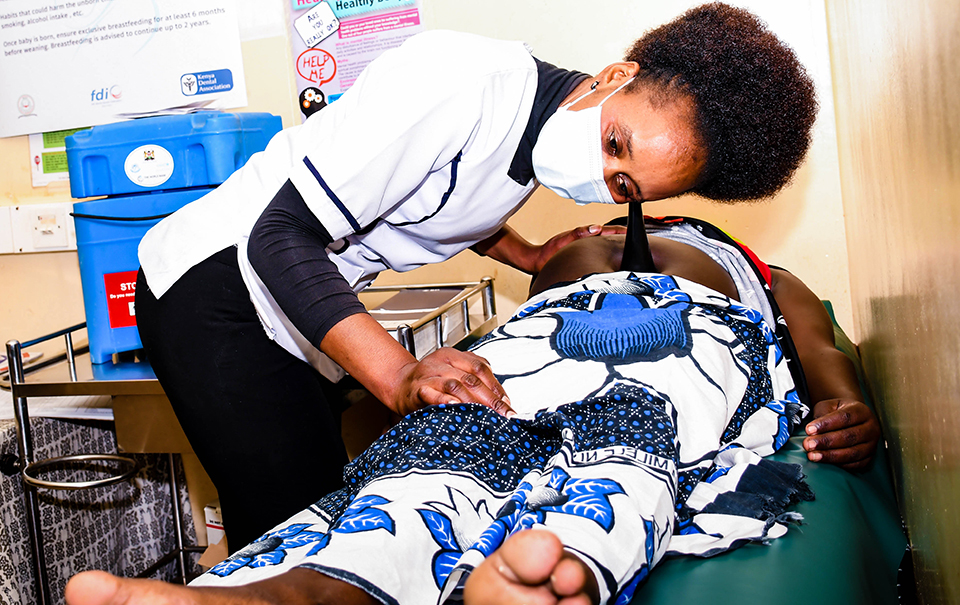Joint UN Health Programme Counters Maternal and Infant Mortality in Kenya
A recently concluded joint-UN programme has shown a significant increase in the provision and uptake of life-saving health services for women, children and adolescents in Kenya.Date:

Almost 50% of Kenya’s maternal and infant deaths are concentrated in just six counties. Photo: UNFPA Kenya/Mukiza Mwenesi
A newly published evaluation of the UN H6 Joint Programme on Reproductive, Maternal, New-born, Child and Adolescent Health (RMNCAH) found the number of women who utilised antenatal care services increased by over 32% in six of Kenya’s counties with the highest burden of maternal and infant deaths. It also contributed to a 30% increase in access to skilled birth attendants for expecting mothers. The programme also supported extensive training and mentoring of health care workers across the target counties on reproductive, maternal, new-born, child and adolescent health, providing them with requisite skills and knowledge to respond to emergencies at primary health facilities and to diagnose and refer patients adequately.
Almost 50% of Kenya’s maternal deaths occur in the programme’s target counties which include Isiolo, Lamu; Mandera; Marsabit; Migori and Wajir. While these counties bear the biggest burden of maternal, new-born, and child deaths, paid health services remain inaccessible to many, due to high poverty levels. The WHO standard for countries is that there should be a health facility within a five-kilometre radius, but in most of the focus counties, facilities are 50-200 kilometres apart. Strengthening of institutional capacity has stimulated an increase in county spending on health. Budget allocation for the health of those six counties has risen by an average of by 18% since 2015. Private sector partnerships have also availed additional resources for investment in critical programme areas.
Gender-based violence (GBV) services remain critical in these counties as well as support to other at-risk groups such as persons living with HIV. The number of women accessing GBV services, such as psychosocial counselling, and those who received HIV testing and counselling at antenatal clinics increased gradually during the programme’s five-year period. Migori County, Western Kenya saw a 50% increase in the number of survivors who seeking GBV services including emergency medical care and psychosocial counselling, and the coastal county of Lamu increased HIV testing by over double.
“We call on partners to support and leverage on the gains made in the last five years to ensure targeted groups in the six counties and communities continue to enjoy the RMNCAH, HIV and GBV services.”. said WHO Representative to Kenya, Dr Rudi Eggers. This is also central to securing health for all, through universal health coverage, he added.
The programme targeted institutional strengthening to ensure local government’s in Kenya could provide the necessary frameworks to deliver urgent health needs. UN Women Kenya was able to directly support the production of Migori County’s Sexual and Gender-Based Violence Policy.
UN Women partners with UNFPA, UNICEF, WHO, UNAIDS and the World Bank to form the H6 partnership, directly mandated to provide global leadership in the health of women, children and adolescents.